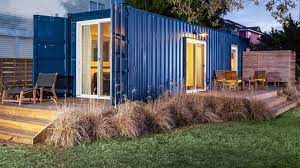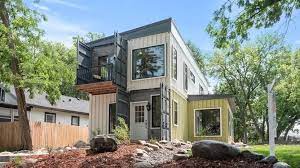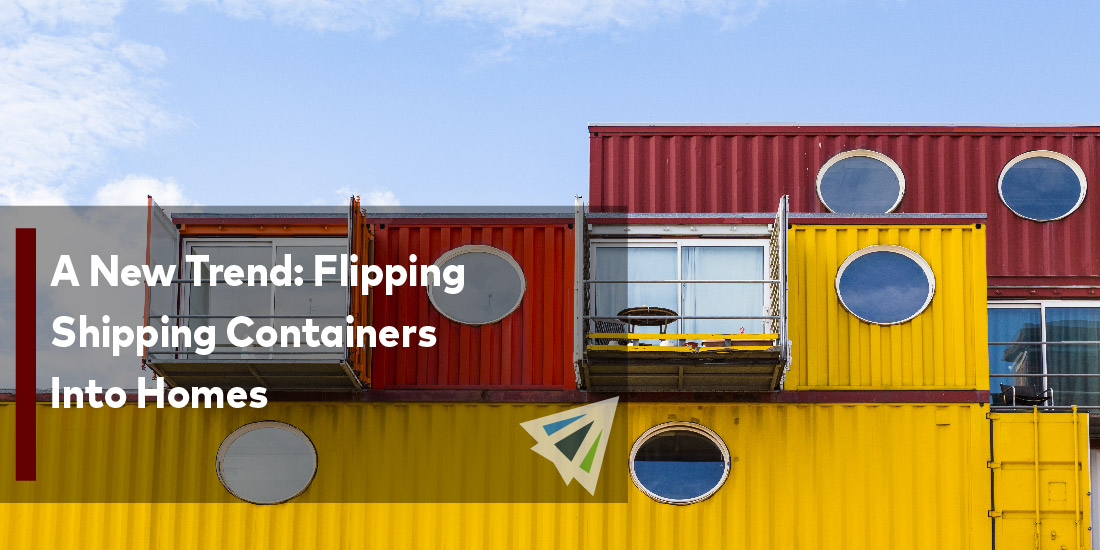Yes, you read that right… some people are turning shipping containers into homes. Like out of an episode of HGTV’s House Hunters, these container homes can be anywhere from 10-feet, 20-feet, 40-feet, and are made from steel containers that typically are used for transporting goods.
Additionally, these homes usually have lower construction and maintenance costs, which is something some homeowners look for.
What container homes contain
Every container home is different when it comes to style, size, and price. The more money put into the container home, the more “lavish” it may look.
Below we take a look at a couple of different container homes. One that’s less than 500 square feet and one that’s over 1,000 square feet.

A smaller sized container home. Courtesy: Today Show
The house shown above was listed back in 2017 for a stagging price of $250,000. It has 320 square feet, one bedroom and one bathroom which desks off the living room and kitchen. The listing describes it as “a modern, minimalist tiny beach home.”
The owner of this home created this because he wanted a home that had less of an impact on the environment.
Larger container homes
One of the unique things about container homes is you can really make it how you want. Take the house below for instance, which uses multiple containers for their home.
Back in 2021 this three bedroom, two bathroom home was listed just under $300,000, and has two stories of container life, and a total of 1,302 square feet of living space.
The seller of this home spent three years working on a commissioned design on the architectural concept.

A larger container home that features multiple attached units. Courtesy: realtor.com
In addition, this home has large picture windows in the living room and kitchen to enjoy the views and let in natural light. It also has an open concept layout on the first floor, that let’s in even more natural light.
This shipping container home is currently off the market and sold for $270,000 back in 2021 – according to realtor.com.
Pros and cons of container homes
Some pros include –
It’s cost effective. Granted, it all comes down to what you truly are looking for and wanting out of a container home. But for the most part they are pretty cost effective, especially in comparison to other homes.
Also, the cost of the home is predictable. Meaning, the manufacturing costs of the home is fixed at the manufacturing factory. The price only varies when it comes to delivery, site prep, foundation, assembly, and connections for utility, per the Constructor.
The durability of the home. Dwelling units made of these containers can handle lots of weather conditions, while proper insultation is important for many reasons – including snowfall during winter – these containers are made of corten steel and can handle a lot.
Some cons include –
Permit issues and building codes: an important thing to do before planning on a shipping container home is to consult with local city planning authorities regarding codes, zoning restrictions, and permit requirements that are needed for container housing.
Needs insulation and reinforcement: Since shipping containers do not have insulting properties, if you live in an area where you can experience a colder climate in winter, then you would need to have a container that would have significant insulation to survive the sometimes extreme Midwest winters.
Additionally, the roof unit of the container can sag during significant snowfall, in order to resolve such issues, the load-bearing walls of the container need reinforcement or install a sloped roof.
Looking Ahead
Should you have any questions regarding this and how it could impact your shipments, please reach out to our team today.
Additionally, we have our weekly market updates that can provide you with relevant freight news, updates, developments across the industry, and more.
